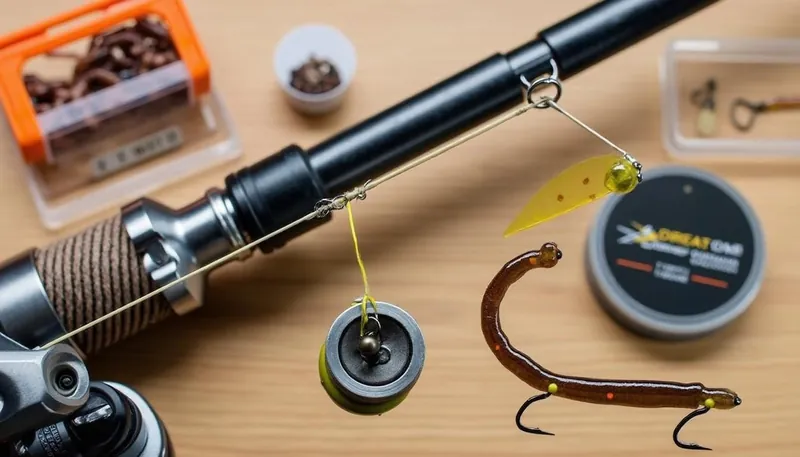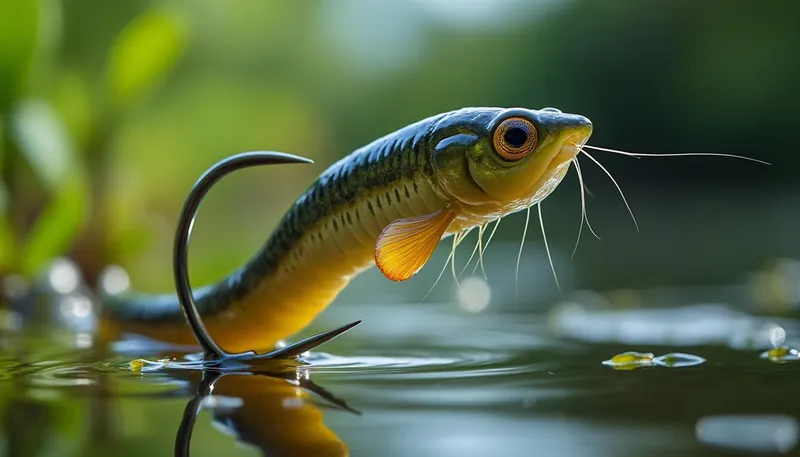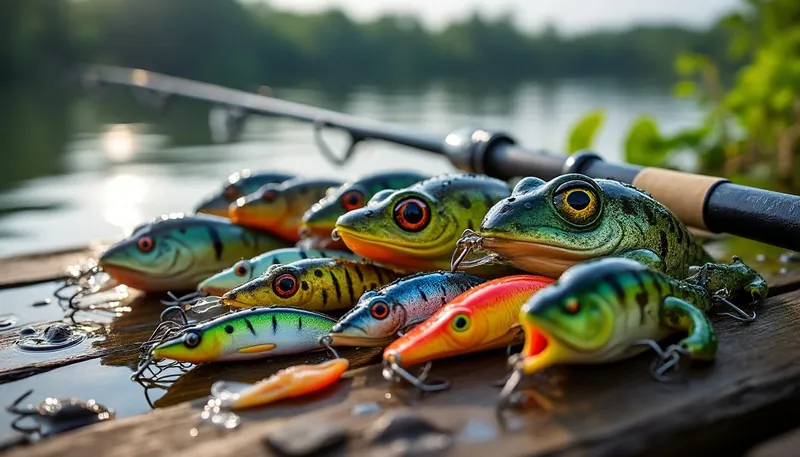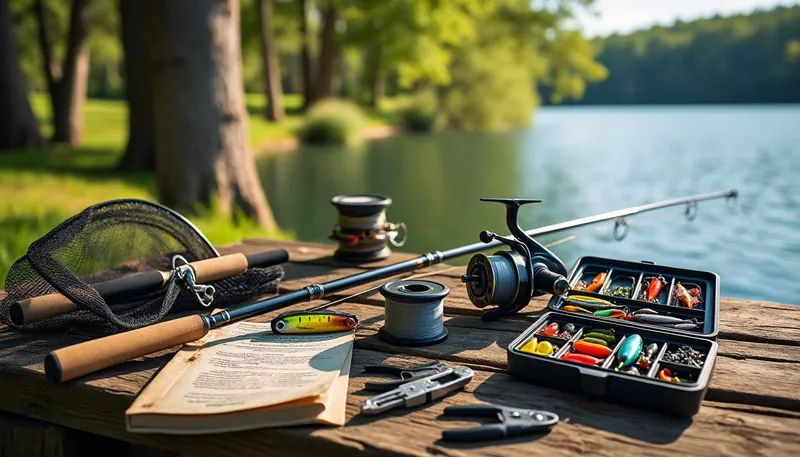Fishing enthusiasts are always searching for the perfect technique, and rigging a worm correctly has become an essential skill in the bass fishing community. This simple art form yields impressive results whether you’re a novice or a seasoned pro. By mastering the intricacies of worm rigging, anglers can enhance their fishing success, transforming ordinary outings into exceptional ones. The beauty of a well-rigged worm lies in its ability to mimic natural bait, attracting elusive bass that may otherwise shy away from more traditional offerings. In 2025, better gear and techniques have made captivating worm presentations even more effective.
In this landscape of fishing advancement, understanding the principles behind worm rigging is crucial. Techniques such as the wacky rig, Texas rig, or Carolina rig each have specific purposes and ideal conditions. Enthusiasts now have access to resources like WormRigPro, which delves into both the science and practical aspects of this beloved method. With platforms such as PerfectWormTackle offering various tackle options, including weights and hooks, anglers have everything they need to optimize their rigs, regardless of expertise level.
The versatility of worm fishing makes it applicable in various freshwater environments, from tranquil lakes to bustling rivers. Mastering the art of worm rigging translates not only into increased catches but also into a more fulfilling fishing experience. With this guide, you can explore effective setups, including rigging techniques, how to choose the right gear, and strategies tailored to different fishing conditions.
- 🎣 Learn to rig worms with various methods.
- 🛠️ Discover the best gear for worm fishing.
- 🔍 Understand how to adapt strategies for different conditions.
- 🐟 Enhance your catch rates by mastering presentations.
- 📚 Get insights from industry experts for best practices.
Understanding Different Types of Worm Rigs
Fishing with worms has evolved over the years, leading to the development of various rigging styles, each designed to maximize effectiveness. Whether you’re targeting bass in a weedy lake or casting over a rocky bottom, selecting the right setup is crucial. Let’s explore some of the most popular worm rigs and their applications.
| Worm Rig Type | Description | Best Use |
|---|---|---|
| Texas Rig | Hook the worm through the head, leaving it weedless. | Weedy or snag-prone areas. |
| Wacky Rig | Hook the worm through the middle, allowing both ends to dangle. | Clear water with cautious bass. |
| Carolina Rig | Use a weight ahead of the hook on a longer leader. | Deep water or when fish are suspended. |
The Texas rig is perhaps the most prevalent, especially among users of WormRigGear. By threading the hook through the head of the soft plastic worm, you create a nearly weedless presentation perfect for areas littered with aquatic plants or debris. This rigging technique allows the bait to slide through tangled environments without getting caught, making it a favorite among bass anglers.
Wacky rigs, on the other hand, have gained immense popularity due to their unique movement in the water. Rigging the worm through its midsection creates an enticing action that mimics a struggling worm, especially effective on days when the fish are less likely to strike. Utilize this setup near docks or submerged structures, where bass tend to seek shelter.
For situations where fish are deeper, the Carolina rig is the go-to choice. This rigging style separates the weight from the hook, allowing the worm to float above the bottom, creating a more natural look in the water. For deeper lakes or during the transition to fall, this can be the difference between a day of fishing and a day of catching.

Choosing the Right Worm for Your Rigs
The success of your worm fishing largely depends on the choice of your bait. With so many colors, sizes, and types available, selection can seem daunting. However, understanding the environmental conditions and the species you’re targeting can simplify the choice.
When selecting worms, consider the following factors:
- 🌊 Water Clarity: In clear water, stick to natural colors like green pumpkin or watermelon. In murky conditions, try bright or dark hues like chartreuse or black.
- 🌡️ Seasonality: During warm months, longer worms (6-8 inches) often yield success. In colder months, opt for shorter worms (4-5 inches) that bass may find more approachable.
- 🐠 Target Species: Match the worm size and action with the species you’re targeting. For smaller fish, a finesse worm or a smaller profile can be more effective.
Additionally, consider the preferences of the fish species and their feeding habits at different times of the day. Learning the local forage will guide your choices in worm selection, helping you make better decisions tailored to the fish’s natural diet.
Perfect Gear for Rigging and Fishing Worms
To rig a worm successfully, you’ll need the right equipment. Your rod, reel, line, and tackle can enhance your performance. But how do you choose the perfect gear?
Start by looking into these essential components:
| Gear Component | Recommendation | Why It Matters |
|---|---|---|
| Rod | Medium to medium-light spinning rod (6’6” to 7’) | Optimal balance of sensitivity and strength. |
| Reel | Smooth high-quality spinning reel (2500-3000 size) | Allows for easy casting and retrieval. |
| Line | Fluorocarbon (6-12 lb test) | Low visibility and great sensitivity for detecting bites. |
Choosing a rod that offers both sensitivity for detecting bites and enough backbone for setting hooks is crucial. A medium-light rod provides an ideal combination for worm fishing, especially when paired with a quality reel that works smoothly under pressure from large fish.
Your line selection should include fluorocarbon, as its low visibility enhances the natural appearance of your bait. However, braided line combined with a fluorocarbon leader can also improve sensitivity and strength when encountering more rugged conditions.

Mastering Retrieval Techniques
Now that the gears are set and your worm rigged, it’s time to focus on the retrieval techniques. Depending on the conditions and fish behavior, varying how you retrieve your bait can lead to success. Here are effective retrieval methods to consider:
- 🎣 Slow Drag: Keeps the worm close to the bottom, perfect for mimicking a worm crawling; effective in clear water.
- ⚡ Hop and Drop: Lifts your rod to hop the worm, then allows it to fall, simulating an injured prey’s movement; great when fish are active.
- 🛑 Dead Stick: Casts the worm and lets it sit, providing little movement to catch the attention of lethargic fish.
While a slow drag can entice cautious bass, maintaining an active retrieval method such as hop and drop can provoke strikes when bass are more aggressive. Always pay attention to how the fish are responding and adjust accordingly.
Balancing the retrieval speed and method is essential for presenting the worm most effectively. Observing nearby structures or cover can also provide clues about where bass are holding, allowing you to adapt your strategy in real-time.
Tips for Locating Bass While Using Worms
To effectively catch bass, you must understand not only how to rig and retrieve worm bait but also where to find the fish. Knowing bass behavior and environmental preferences is critical for a successful day on the water. Here are expert tips to guide your search:
- 🌳 Target Structures: Look for submerged logs, rocks, and man-made structures. Bass often use these spots for ambush.
- 🏞️ Pay Attention to Vegetation: Areas where vegetation meets open water can be hot spots, as food sources reliably gather there.
- 🕖 Optimal Timing: Early mornings and late afternoons tend to be the best times for bass activity, especially around shady areas.
- 📏 Experiment with Depths: Adjust your worm’s depth based on water temperature and clarity; bass can vary from shallow to deep water depending on the season.
A comprehensive understanding of your local waters and seasonal habits can enhance your fishing effectiveness. Staying observant to changes in conditions can yield greater insights into where bass are likely holding.
What is the best way to rig a worm?
The most effective method is to hook the worm through its middle, allowing both ends to flutter freely. This creates an enticing, natural movement that attracts bass.
Which gear is optimal for worm fishing?
A light to medium-light spinning rod paired with a smooth, high-quality spinning reel provides the sensitivity and control needed for subtle bites and precise casting.
What water conditions suit worm fishing best?
Worms excel in clear to slightly stained water, especially around vegetation, docks, and submerged structures where bass are typically hiding.
Should I use weights when fishing worms?
While many anglers fish worms weightless, adding a small weight inside the worm can help it sink faster in deeper water, especially in current.
What colors are most effective for worms?
Natural shades like green pumpkin, watermelon, and brown work well in clear water, while brighter colors such as chartreuse or dark options can be effective in murkier conditions.


